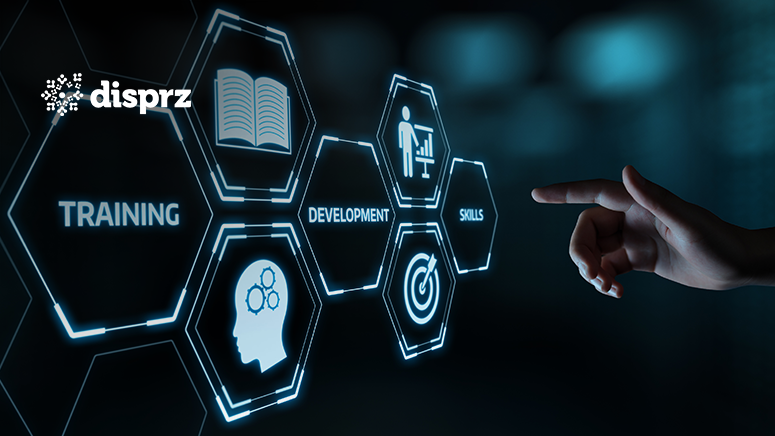In the Philippines, business growth is tightly linked to compliance. Whether it’s data privacy under the Data Privacy Act of 2012, labor standards from the Department of Labor and Employment (DOLE), or sector-specific mandates in BPO, healthcare, and financial services, every enterprise feels the pressure to stay audit-ready.
Unlike in more mature markets, compliance in the Philippines isn’t just a legal safeguard; it’s a measure of operational credibility. A BPO missing mandatory training deadlines risks losing a global client contract. A hospital failing to document compliance with health protocols risks its accreditation. For banks, the inability to demonstrate anti-money laundering training could mean fines running into millions of pesos.
Yet, many Filipino enterprises still rely on fragmented spreadsheets or siloed HR systems to track training compliance.
By integrating LMS reporting and analytics into daily operations, Filipino enterprises can streamline compliance processes, reduce operational risk, and strengthen workforce readiness.
Here, we explore how LMS reporting and analytics work, the capabilities to prioritize, best practices, challenges, and practical ways to measure compliance effectiveness.
How LMS Reporting & Analytics Work
At its core, an LMS acts as the system of record for all training. Every learner login, course enrollment, module completion, and assessment score generates data. Reporting and analytics take this raw data and turn it into compliance intelligence.
Think of it as three layers:
-
Tracking: The LMS automatically records learner activity: course completions, certifications, deadlines, and scores.
-
Reporting: These records are compiled into dashboards and reports: completion rates, overdue learners, certification expiries, and departmental compliance.
-
Analytics: This is where insight happens: spotting which teams consistently lag, predicting which certifications may expire next quarter, or benchmarking compliance across business units.
For example:
-
A financial services firm can track whether all staff have completed Anti-Money Laundering (AML) training before BSP’s deadline.
-
A hospital can see which nursing units have gaps in patient safety protocols training.
-
A BPO can ensure 100% of agents complete client-specific data security modules within 30 days of onboarding.
This visibility and foresight make LMS analytics essential for enterprises that must demonstrate compliance both locally and to international stakeholders.
The flow is straightforward: training activity → data capture → dashboard visualization → proactive action. This structure turns compliance from a reactive task into an ongoing process.
Top Features to Look for in LMS Analytics Tools
- Compliance and Audit-Ready Dashboards
- Real-Time Engagement Insights
- Skills Intelligence and Gap Analysis
- Seamless Integrations with HR and Productivity Tools
- Predictive Analytics and AI-Powered Recommendations
- Customizable, Role-Based Dashboards
Selecting the right LMS analytics tool is primarily about ensuring that your organization can keep pace with regulatory demands, employee expectations, and business transformation goals in the Philippines. The best platforms don’t stop at reporting; they provide actionable intelligence.
Here’s what to prioritize when evaluating options:
1) Compliance and Audit-Ready Dashboards
Your tool should make it effortless to demonstrate compliance with DOLE, TESDA, or industry-specific regulations. Look for automated compliance tracking, completion certificates, and role-based audit reports that you can export in minutes.
2) Real-Time Engagement Insights
A modern workforce demands modern analytics. Leaders should see, at a glance, which teams are engaging, which are falling behind, and how learning links to productivity. Features like heatmaps, engagement scores, and mobile-optimized dashboards keep leaders proactive instead of reactive.
3) Skills, Intelligence and Gap Analysis
An advanced LMS goes beyond completions; it maps learning progress to actual skill acquisition. Look for built-in skills frameworks, proficiency scoring, and gap analysis that directly inform workforce planning.
4) Seamless Integrations with HR and Productivity Tools
Data loses value if it stays siloed. Choose a tool that integrates natively with HRIS, performance systems, and collaboration tools like Microsoft Teams or Slack, ensuring learning data connects to business data.
5) Predictive Analytics and AI-Powered Recommendations
Leading organizations are moving past backward-looking reports. Predictive analytics flag risk areas early, while AI recommendations personalize learning journeys based on role, performance, and goals.
6) Customizable, Role-Based Dashboards
From CHROs to L&D managers to business unit heads, every leader needs a view tailored to their priorities. The right tool allows you to create dashboards by role, region, or function so decision-makers always see what matters most.
What Are the Key LMS Reports Every Filipino Enterprise Should Monitor
When compliance becomes a boardroom priority, the question shifts from “Do we have the data?” to “Do we have the right data?” For Filipino enterprises navigating a mix of local labor laws, regional regulations, and global standards, a few reports rise above the noise.
These are not just administrative exports; they’re the pulse check on organizational readiness.
1) Completion Reports
The foundation of compliance tracking. These reports confirm who has finished mandatory courses, who is still in progress, and who hasn’t started. In heavily regulated sectors like BPO and healthcare, completion reports are the first line of defense in case of an audit.
2) Certification & Renewal Reports
Training doesn’t end at completion; certifications often expire. Renewal reports highlight employees due for recertification within 30, 60, or 90 days, preventing last-minute scrambles and regulatory gaps.
3) Assessment & Knowledge Retention Reports
Completion means little if employees can’t apply what they learned. These reports surface scores, pass/fail rates, and question-level analytics to reveal whether compliance is performative or truly embedded.
4) Overdue & Exception Reports
These shine a light on risk zones; individuals or departments consistently falling behind on deadlines. For leadership, this is where action plans and accountability begin.
5) Role- and Function-Specific Compliance Reports
Not all employees face the same compliance demands. A call center agent in Manila may need data privacy certifications, while a plant operator in Cebu requires safety training. Role-based reports ensure training relevance and avoid one-size-fits-all compliance.
6) Trend & Risk Reports
Beyond the snapshots, trendline reporting shows whether compliance is improving or deteriorating over time. For COOs and CHROs, this forward-looking view is essential for spotting systemic risks before they escalate.
Sample Compliance Dashboard/Report Layout
One of the most effective ways to make compliance measurable is to translate it into a visual, role-based dashboard. Instead of drowning in raw reports, leaders can track progress through a few core metrics that instantly reveal where risks lie and where training is working.
A sample compliance dashboard might look like this:
|
Metric Category |
KPI / Data Point |
Example Data |
What It Means / Why It Matters |
|
Completion Metrics |
Overall Completion Rate (%) – 86% |
86% |
Share of all assigned compliance courses completed across the org. A benchmark for overall program health. |
|
Mandatory Training Completion (%) – 90% |
90% |
High-priority courses tied to regulations/policies. Anything below 95% signals compliance risk. |
|
|
Optional/Recommended Completion (%) – 72% |
72% |
Shows voluntary learning adoption. A proxy for employee initiative and culture of compliance beyond “check-the-box.” |
|
|
Timeliness Metrics |
On-Time Completion (%) – 83% |
83% |
Employees finishing by the deadline. Crucial to avoid audit issues. |
|
Overdue Trainings (#) – 54 |
54 |
Volume of employees overdue. Tracking by department highlights risk clusters. |
|
|
Avg. Days to Complete Training – 6.2 |
6.2 days |
Measures efficiency. Long delays often point to scheduling, workload, or poor UX. |
|
|
Risk Indicators |
High-Risk Roles with Incomplete Training – 11% |
11% |
Share of roles like finance, legal, or plant safety that missed compliance. This is where non-compliance = direct business/legal risk. |
|
Policy Violations Linked to Training (%) – 4% |
4% |
% of misconduct cases where employees had skipped training. Connects learning gaps to business risk. |
|
|
Engagement Signals |
Repeat Login Rate (per month) – 2.4 |
2.4 |
Average logins per learner/month. High repeat logins = active learning culture. Low = compliance done as a one-time “tick-box.” |
|
Avg. Training Hours per Employee – 5.6 hrs |
5.6 hrs |
Total learning investment per employee. A mix of compliance + skill-building. |
|
|
Quality & Feedback |
Post-Training Quiz Pass Rate – 88% |
88% |
Shows knowledge retention. <80% signals either poor course design or low learner focus. |
|
Learner Satisfaction (Survey Score /5) – 4.2 |
4.2/5 |
Learner feedback on course relevance & experience. Helps L&D improve adoption and reduce resistance. |
|
|
Compliance Health |
Fully Compliant Employees (%) – 91% |
91% |
Employees who are up-to-date on all mandatory modules. Strong leading indicator for audit readiness. |
|
Non-Compliant Employees (#) – 84 |
84 |
Headcount gap. Even a small group here can jeopardize compliance in certain functions. |
Why does this matter? This dashboard provides detailed insights on:
-
Completion vs. Timeliness: Are people finishing, and are they finishing on time?
-
Risk Indicators: Where are compliance failures most dangerous?
-
Engagement & Quality: Are employees just “clicking through,” or is the learning effective and valued?
-
Overall Compliance Health: one clear measure to show the board or regulators.
4 Best Practices for Driving Compliance with LMS Analytics
1) Translate reports into accountability, not paperwork
A compliance report is only valuable if it drives behavioral change. Filipino enterprises often generate mandatory training reports for regulators, but stop there. By tying reports to manager scorecards and team key performance indicators, enterprises move from tracking to enforcing. This creates shared accountability across functions rather than leaving compliance in HR’s silo.
2) Broaden dashboard access beyond HR
Too often, compliance visibility sits with HR or L&D alone. Progressive enterprises in the Philippines are sharing dashboards with BU heads and line managers. When leaders see real-time compliance gaps in their own teams, they act faster to close them—avoiding last-minute scrambles during audits.
3) Build alerts and predictive triggers
Compliance issues rarely appear overnight—they build slowly through missed modules or delayed completions. Configuring the LMS to alert managers when compliance rates dip below, say, 90% enables proactive intervention. Over time, predictive triggers can even forecast which teams are likely to fall behind, allowing corrective action weeks before audits.
4) Frame compliance in terms of business outcomes
Employees resist training when it feels like bureaucracy. Best practice is to connect compliance modules with tangible outcomes: reduced workplace accidents, higher customer trust, or faster ISO certification renewals. Framing compliance as performance-linked rather than policy-mandated shifts motivation from obligation to pride.
What Challenges Do Filipino Enterprises Face with LMS Reporting
Fragmented compliance data across systems
Many enterprises use separate LMSs, manual trackers, or industry-specific software. This fragmentation creates inconsistent reporting, making it difficult to present a single source of truth during audits. Auditors then lose confidence in the integrity of reports, increasing risk exposure.
Low adoption of dashboards by managers
LMS dashboards are often underutilized because they’re seen as “HR-only.” In the Philippines, where frontline managers juggle multiple priorities, this leads to compliance ownership falling through the cracks. Without manager buy-in, compliance often turns into a last-minute rush rather than a sustained process.
Gaps in analytics literacy
Even when dashboards exist, managers may struggle to interpret data trends. They may look at completion percentages without understanding deeper risk patterns, like repeat defaulters or systemic training fatigue. This gap reduces the LMS’s impact as a decision-making tool.
Navigating dual compliance regimes (local + global)
Philippine enterprises that are part of multinational groups face added complexity. They must comply with local regulatory frameworks; like DOLE (Department of Labor and Employment) mandates; while aligning with global compliance programs (ISO, GDPR, ESG). Misalignment between the two can cause redundant training loads and reporting fatigue.
How Filipino Enterprises Can Get Started
Audit current compliance processes and risks
Before investing in analytics-heavy LMS features, enterprises should map out where compliance data currently resides, who owns it, and where the biggest risks are (e.g., safety training, data privacy modules, or sector-specific certifications). This ensures reporting priorities are business-critical, not just “nice-to-have.”
Prioritize high-value compliance reports
Filipino enterprises often get lost in vanity metrics like login counts. The smarter move is to start with three to five core reports that directly influence risk: overdue training, department-level compliance gaps, audit readiness scores, and repeat non-compliers. These reports deliver quick wins and build leadership trust in LMS analytics.
Run controlled pilots before scaling enterprise-wide
Rather than overwhelming managers with dashboards, start with one unit (e.g., manufacturing or sales). Share early insights—like reduction in overdue compliance from 40% to 10%—with senior leaders. These proof points build momentum for broader rollout across the organization.
Integrate LMS with HRIS and audit systems
A standalone LMS creates duplication. When LMS data flows into HR systems (for employee records) and audit software (for regulatory reporting), compliance becomes streamlined. Enterprises reduce manual reconciliation and strengthen the integrity of records for external regulators.
Leverage vendor expertise to localize analytics
Global LMS vendors often offer sophisticated features but may not understand DOLE, SEC, or industry-specific compliance nuances in the Philippines. Partnering with a vendor who can configure dashboards to local requirements (while still aligning with global benchmarks) prevents wasted investment and ensures compliance data passes both local and international scrutiny.
Looking for an advanced LMS option in the Philippines? Check out the link here.
Conclusion
In the Filipino enterprise landscape, compliance has long been treated as a baseline: necessary, but rarely transformative. That’s changing fast. Forward-looking companies now see compliance as the backbone of workforce intelligence, where data goes beyond completions to link mandatory training with skills growth, productivity, and readiness for transformation.
Modern learning platforms make this shift possible. With advanced analytics, personalization, and scale, leaders can spot risks early, close capability gaps faster, and build a workforce that is both compliant and future-ready.
Disprz accelerates this evolution by moving enterprises from passive tracking to active workforce development. Its analytics connect learning with business outcomes, surface risks before they escalate, and tie mandatory training to real skill progression. With mobile access, nudges, and automated reporting, compliance becomes more than a safeguard—it becomes a competitive edge.
FAQs
1) How can LMS analytics improve employee training outcomes?
LMS analytics go beyond tracking completions. By analyzing engagement patterns, assessment scores, and on-the-job performance progression, leaders can identify gaps early and personalize learning journeys. This ensures training is not only finished but also effective. It helps build measurable improvements in employee capability, productivity, and readiness.
2) What LMS reports are needed for compliance in the Philippines?
For Filipino enterprises, compliance reporting must cover completion rates, mandatory certifications, retraining cycles, and audit-ready records. Beyond legal requirements, advanced LMS reports provide visibility into high-risk groups, training effectiveness, and alignment with labor regulations. This dual focus: regulatory compliance plus workforce intelligence, helps organizations meet government mandates while strengthening employee trust and operational resilience.
3) Can LMS dashboards help during compliance training audits?
Yes. Real-time LMS dashboards simplify audit preparation by consolidating employee training data into a single, transparent view. Auditors can instantly access proof of completion, certification timelines, and exception reports, reducing manual effort and errors. For leaders, dashboards provide continuous visibility into compliance health, ensuring potential gaps are addressed before audits. This proactive approach saves time, builds credibility, and reinforces regulatory trust.









